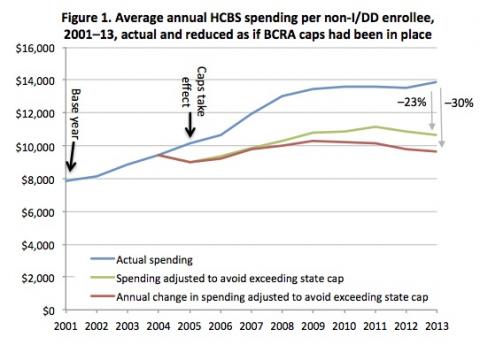Updated: The Better Care Reconciliation Act Threatens the Continued Growth of Home and Community-Based Services

The Better Care Reconciliation Act (BCRA) proposes to cap Federal Medicaid reimbursements to the states, effectively limiting growth to a rate at first only modestly exceeding the rate of inflation in healthcare costs and then falling below inflation. A new CLPC report uses state-by-state HCBS expenditures from 2001 through 2013 and compares the growth in spending during those years to the limitations that would have been in place had BCRA-like caps been imposed during those years. Findings indicate that caps would likely have caused the vast majority of states to limit HCBS growth, reducing increases in per-enrollee spending to substantially below the increases that actually occurred. By 2013, HCBS spending for people with physical disabilities, seniors, and other non-developmental disabilities would probably have been reduced by between 23% and 30% below actual spending. For programs targeted to people with intellectual or developmental disabilities, reductions of up to 16% would have occurred.
Download the report here.
Last modified Jul 3, 2017
